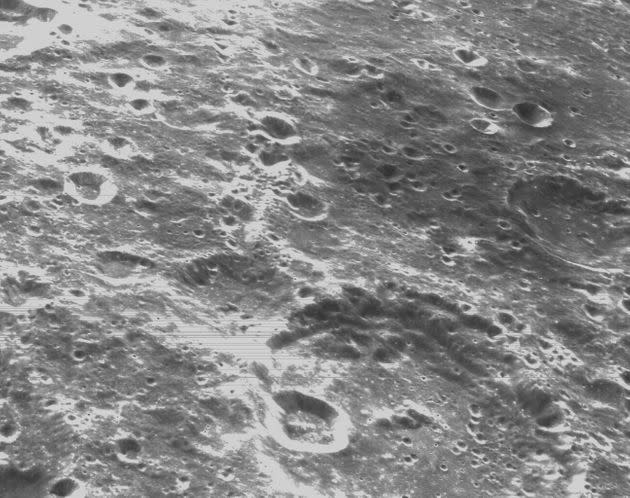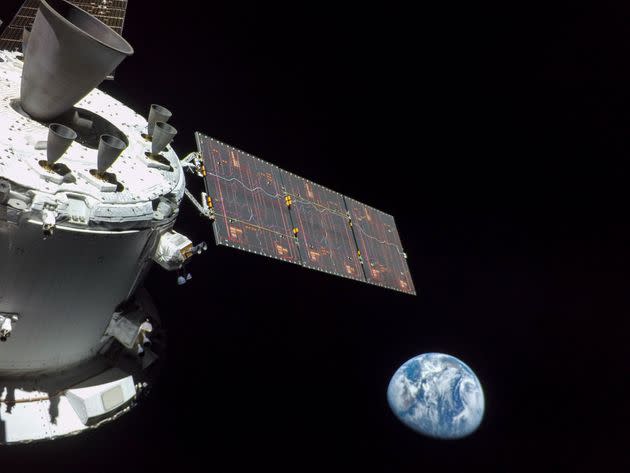Experience The Vast Bleakness Of Space With NASA's New Moon Photos

A portion of the far side of the moon looms large just beyond the Orion spacecraft in this image released Nov. 21, 2022, of the Artemis I mission. The darkest spot visible near the middle of the image is Mare Orientale.
NASA has released stunning new close-up photos of the moon, thanks to the Orion spacecraft.
Orion passed just 81.1 miles over the lunar surface on Monday and then headed over to the far side of the moon — which we usually can’t see from Earth.
The spacecraft has been on its cosmic journey since Nov. 16, when it launched atop the Space Launch System rocket from Florida’s Kennedy Space Center. The Artemis I mission finally took to the skies after years of delays and billions of dollars in overrun costs. NASA is working toward the goal of putting astronauts back on the lunar surface for the first time since the Apollo program 50 years ago.
The capsule is set to enter a “distant retrograde orbit” around the moon on Friday. The “distant” means that it’s really high up from the surface from the moon — about 50,000 miles. Orion will then continue circling the moon for a week and is scheduled to splash down off the California coast on Dec. 11.

On the sixth day of the Artemis I mission, Orion’s optical navigation camera captured black-and-white images of craters on the moon. Its task is to take pictures of the moon at different phases and distances; the data on the different lighting conditions should be useful in aiding navigation with humans later on.

If all goes well with the mission, humans could see these craters IRL in 2024.
Should everything go well with this mission, it will break Apollo 13’s record for longest distance traveled by a spacecraft designed for humans, according to New Scientist magazine.

Definitely not made of cheese.

Feeling insignificant yet? This first high-resolution image, taken on the first day of the Artemis I mission, was captured by a camera on the tip of one of Orion’s solar arrays. The spacecraft was 57,000 miles from Earth when the image was captured.
If you’d like to feel even more like a tiny molecule in an infinite universe, head over to NASA’s Flickr stream to see more photos and videos of the mission.

 Yahoo Sport
Yahoo Sport 





































